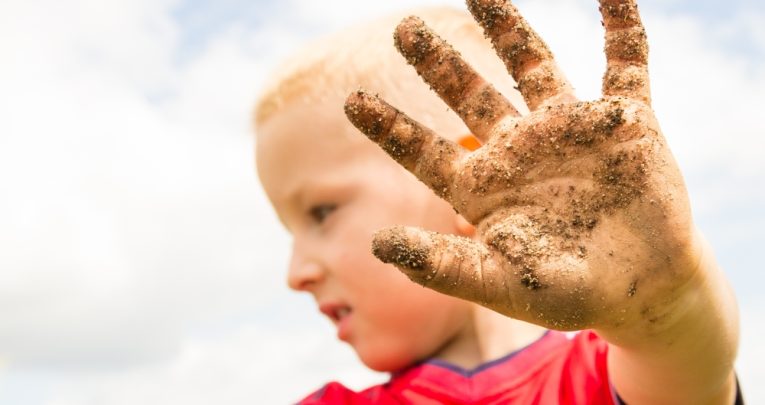Step Away From The Laminator And Remember What Outdoor Areas Are For

The outdoors can offer many things – but neat displays and an abundance of letters and numerals shouldn't be at the top of the list, says Amii Spark…
- by Amii Spark

We all know just how important the outdoor area is. Time outside has been proven essential to every aspect of the growth and development of young children.
Since the advent of the EYFS we have invested a lot of time in our outdoor spaces. We have created signs, number lines, sensory walls, photographic displays and so on. We have printed and laminated ourselves crazy, and gone mad with the staple gun creating ‘stimulating’ outdoor areas.
Be at this point we have actually gone a bit overboard with the text and numerals. We really need now to ask ourselves, whether this is what children need from their outdoor environments…
Back to basics
I think we need to go back to the basics of what ‘outdoor play’ actually means. It’s time away from a structured and controlled environment; a time for children to experience nature and explore the abilities of their bodies.
Toddlers and preschoolers are passing through a phase of maximum effort, meaning they have a neurological urge to test their physical limits. If we look at how forest schooling is structured, it uses the natural environment to teach children not only about nature and self-help skills, but also the basics of mathematics and literacy – all without the help of any laminated and stapled signs.
In all honesty, it’s common sense. It’s something that we have been doing for thousands of years – using nature and natural objects to develop our ability to notice the differences and similarities in objects and environments. This is where we need to draw the line between an ‘outside classroom’, which is basically the same as the indoor environment but outside, and an ‘outdoor environment’, which is based on experiencing nature and the holistic development that comes with it.
An outdoor classroom is a luxury, but a free outdoor environment is a requirement. Children need it. They need time to get away from the text, numbers and pictures that surround them indoors, and to truly experience the great outdoors and test their own abilities.
Making it more real
For a truly effective outdoor environment, children need resources such as ground-level sandpits so they can actually get right in with the sand; patches of soil in which to dig with real tools; something to climb on – be it a plastic climbing structure, a wooden ship or a DIY obstacle course; trees, shrubs and herbs, so that they can experience the seasons and the creatures that come along with them; and a spot with stones and logs in which to go looking for bugs.
They need a den of some kind to hide in, space in which to run, lots of containers to fill and carry, sets of loose parts such as stones, leaves, corks, shells, wood cuts, and items for large building, such as hollow blocks, large boxes and pipes.
Lastly, they need time – at least an hour-and-a-half to truly get into what they are doing. When children have this type of outdoor environment, they not only work through concepts in a much more physical way, but also have the break that they need from our ‘humanised’ environments. We are, after all, animals. Children today are born with the same needs as our cave-dwelling ancestors. They only had the natural environment in which to learn, and it’s thanks to their innovation and creative thinking that the fabricated environment we have today even exists. So next time you’re thinking about your outdoor environment, put down the staple gun, save yourself hours on laminating and ask yourself, “How can I make this more real?”
Signs and numbers, and well-thought-out beautiful displays are not the answer. Time in nature is what children are so greatly deprived of, so it’s this we need to give them. In this way, we can be sure that every child who attends our settings benefits from at least some of the time they so desperately need to engage with the natural world, without being inundated with pre-academic pollution.
A former preschool deputy manager in the UK, Amii Spark today runs a nursery on the sunny island of Malta. She is also the founder of The Olive Grove, a Montessori-based parent education and support service; for more information, visit facebook.com/OliveGroveMalta or follow @olivegrovemalta











